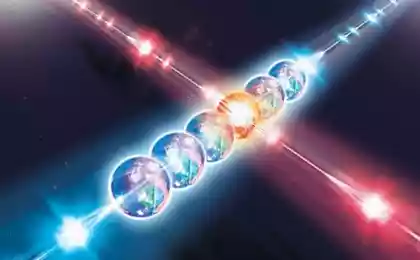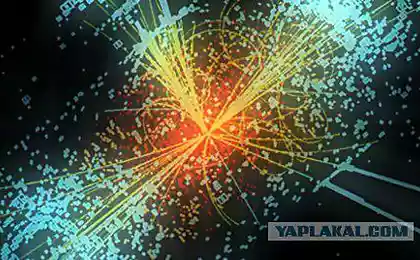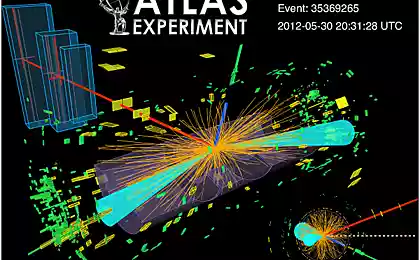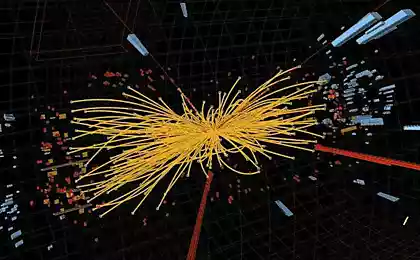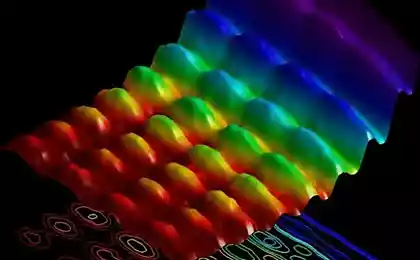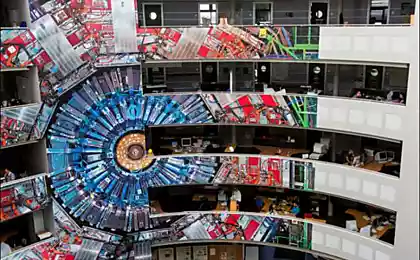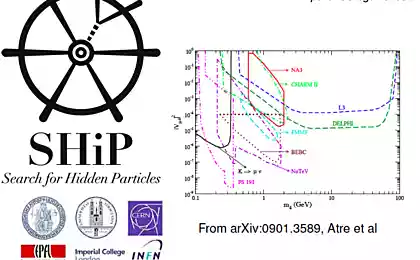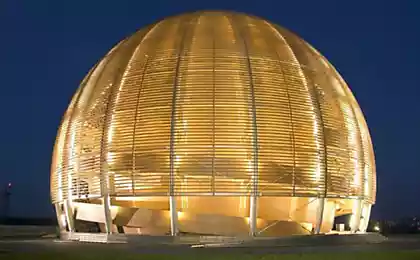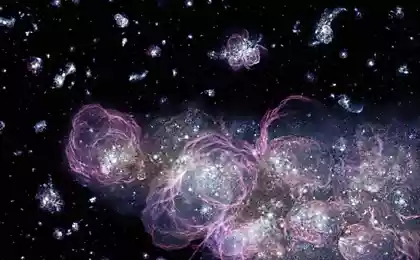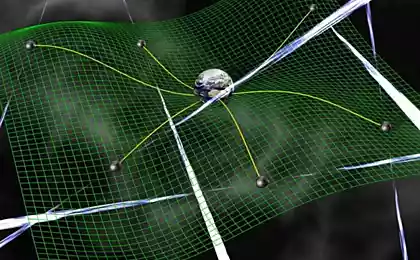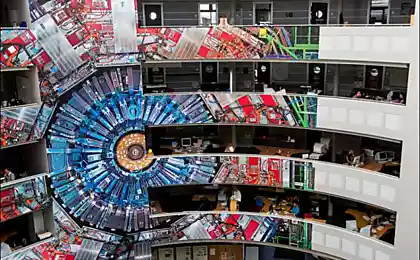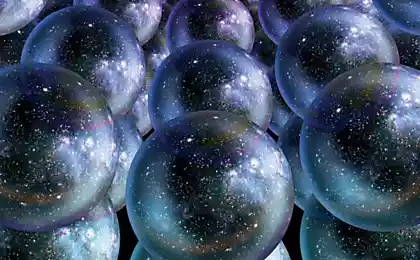815
5 reasons why physics still remains interesting after the discovery of the Higgs boson
Stephen Hawking said that the discovery of the Higgs boson would be his razocharovaloByla Physics "interesting" if the Higgs boson has not been opened? Stephen Hawking adheres to such opinion. He made a bold statement at the opening of a new exhibition at the Science Museum in London devoted to the physics of elementary particles.


But if we have a boson itself, several Nobel Prizes in this regard and the collider, where he managed to find out why we are still studying physics? On it there are five reasons:
1. Still in tme
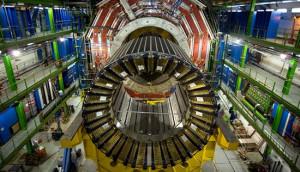
With the discovery of the Higgs decisive final part of the puzzle of physical space, known as the Standard Model, into place. However, in the physics of elementary particles there are still many gaps: for example, we can not explain why we all exist. Standard model for all its mathematical elegance and incredibly realistic accuracy, shows that the universe must be a limitless ocean of cold lifeless world.
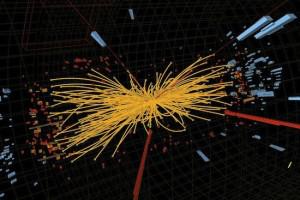
When the universe was born just, there had to be roughly equal amounts of matter and antimatter. Coexist two kinds of matter can not: their contact is a flash of light and immediate annihilation. Nevertheless, they are a part of this matter and somehow transformed into beings capable of thinking consciously and currently beating of a mystery how their existence possible. What could be more interesting than the recursive existential crisis?
2. How do sverhprovodniki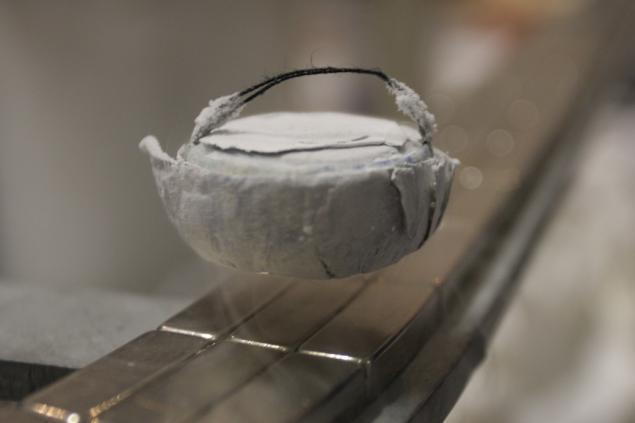
Elementary particle physics may explain the behavior of certain subatomic particles, but of trillions of interactions between particles in solid or liquid form still eludes understanding. We know this much: for example, we can say how the semiconductors and magnets. However, there are some exotic material, the principle of which we do not understand so far - such as superconductors.
How do these strange materials conduct electricity without any energy loss was? Currently superconductors work only at a couple of hundred degrees below zero, but if scientists could get them to work at room temperature, then came to the new technological revolution.
By the way, the Higgs mechanism was first postulated by theoretical physicists in studies of superconductivity. A mathematics describes the electrons in super-cold pieces of superconducting metal and Higgs field permeates the entire universe and are part of the weight of all its particles.
3. Fastest Mirror Vselennoy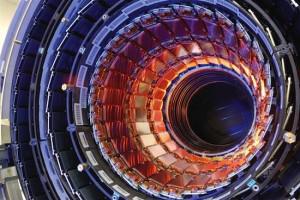
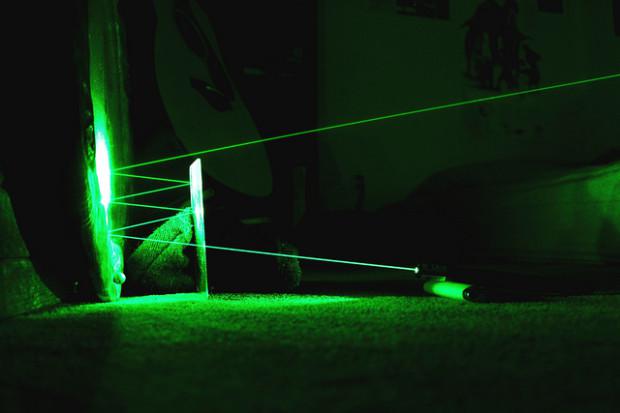
Physics studies the biggest, small, fast, slow, hot and cold things in the universe - sometimes by quite exciting experiments.
Do you want to detect neutrinos, the smallest particle in existence? Take the 50,000-ton tank of ultra-pure water, place it at a depth of a little less than two kilometers below the surface of the Earth in Japanese galvanized pit, surround it with 10,000 ultra-sensitive detectors and watch the almost invisible light flashes. Like all simple.
Do you want to double-check the theory of relativity? The man he once invented a thought experiment in which a beam of light reflected from a mirror moving at a significant fraction of the speed of light. Now this is not just a thought experiment - Physics really held him, and reflected by a mirror made of light electrons moving at a speed of 1000 km / s. So Einstein seems to have been right.
4. Nuclear sintez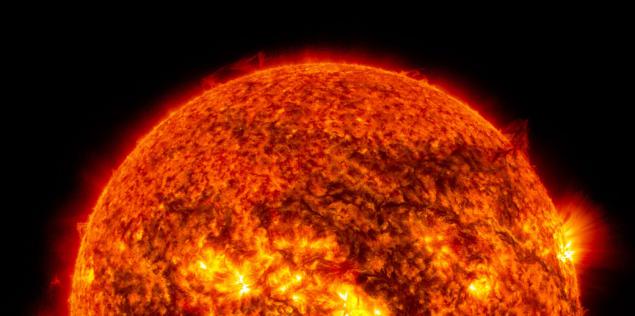
What is the science of physics in addition could provide us with the opportunity to gain an almost endless source of clean energy? Thermonuclear energy - this is the source of strength that allows the stars to burn: the hydrogen atoms are heated to temperatures of millions of degrees, join to form helium, releasing during this process an enormous amount of energy.
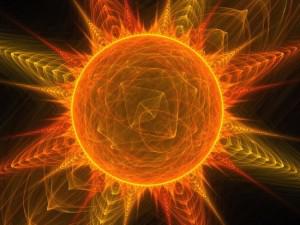
Physicists and engineers believe that for the equivalent funds to build modern railways, we could build an experimental reactor with the help of which would receive almost infinite clean energy. And, mind you, is priced at just £ 50 per person in the developed world. So the physics is not only interesting, but also profitable.
5. Kosmos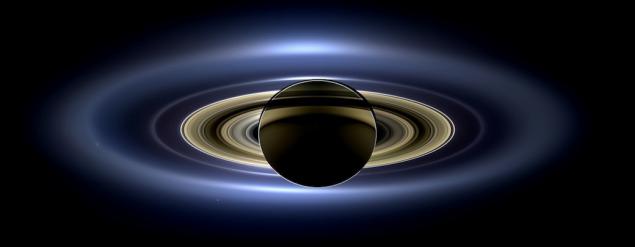
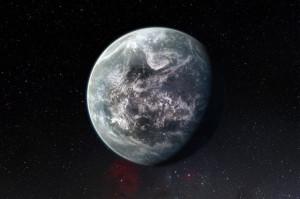
This image was obtained by the Cassini probe orbiting Saturn. If you simply type a stunningly sophisticated shining rings of Saturn's not enough for you, then pay attention to the pale blue dot in the lower right corner of the image - this is nothing like Earth.
In our universe are so many sites to explore: the creation of spacecraft and telescopes, lakes of liquid methane on the satellites of the planets of our solar system and planets orbiting distant stars.

Stephen Hawking says it this way:


But if we have a boson itself, several Nobel Prizes in this regard and the collider, where he managed to find out why we are still studying physics? On it there are five reasons:
1. Still in tme


With the discovery of the Higgs decisive final part of the puzzle of physical space, known as the Standard Model, into place. However, in the physics of elementary particles there are still many gaps: for example, we can not explain why we all exist. Standard model for all its mathematical elegance and incredibly realistic accuracy, shows that the universe must be a limitless ocean of cold lifeless world.

When the universe was born just, there had to be roughly equal amounts of matter and antimatter. Coexist two kinds of matter can not: their contact is a flash of light and immediate annihilation. Nevertheless, they are a part of this matter and somehow transformed into beings capable of thinking consciously and currently beating of a mystery how their existence possible. What could be more interesting than the recursive existential crisis?
2. How do sverhprovodniki

Elementary particle physics may explain the behavior of certain subatomic particles, but of trillions of interactions between particles in solid or liquid form still eludes understanding. We know this much: for example, we can say how the semiconductors and magnets. However, there are some exotic material, the principle of which we do not understand so far - such as superconductors.
How do these strange materials conduct electricity without any energy loss was? Currently superconductors work only at a couple of hundred degrees below zero, but if scientists could get them to work at room temperature, then came to the new technological revolution.
By the way, the Higgs mechanism was first postulated by theoretical physicists in studies of superconductivity. A mathematics describes the electrons in super-cold pieces of superconducting metal and Higgs field permeates the entire universe and are part of the weight of all its particles.
3. Fastest Mirror Vselennoy


Physics studies the biggest, small, fast, slow, hot and cold things in the universe - sometimes by quite exciting experiments.
Do you want to detect neutrinos, the smallest particle in existence? Take the 50,000-ton tank of ultra-pure water, place it at a depth of a little less than two kilometers below the surface of the Earth in Japanese galvanized pit, surround it with 10,000 ultra-sensitive detectors and watch the almost invisible light flashes. Like all simple.
Do you want to double-check the theory of relativity? The man he once invented a thought experiment in which a beam of light reflected from a mirror moving at a significant fraction of the speed of light. Now this is not just a thought experiment - Physics really held him, and reflected by a mirror made of light electrons moving at a speed of 1000 km / s. So Einstein seems to have been right.
4. Nuclear sintez

What is the science of physics in addition could provide us with the opportunity to gain an almost endless source of clean energy? Thermonuclear energy - this is the source of strength that allows the stars to burn: the hydrogen atoms are heated to temperatures of millions of degrees, join to form helium, releasing during this process an enormous amount of energy.

Physicists and engineers believe that for the equivalent funds to build modern railways, we could build an experimental reactor with the help of which would receive almost infinite clean energy. And, mind you, is priced at just £ 50 per person in the developed world. So the physics is not only interesting, but also profitable.
5. Kosmos


This image was obtained by the Cassini probe orbiting Saturn. If you simply type a stunningly sophisticated shining rings of Saturn's not enough for you, then pay attention to the pale blue dot in the lower right corner of the image - this is nothing like Earth.
In our universe are so many sites to explore: the creation of spacecraft and telescopes, lakes of liquid methane on the satellites of the planets of our solar system and planets orbiting distant stars.

Stephen Hawking says it this way:
«Do not forget to look at the stars, not just the feet. Try to understand what you see and wonder that allows the universe to exist? »
blockquote> We may be disappointed with the Higgs boson, but put on the physics of the cross is definitely too early.
via factroom.ru
"Foxy" facial features make a person particularly attractive
Scientists from the United States argues that the sore backs and painful labors prove extraterrestrial origin of mankind

